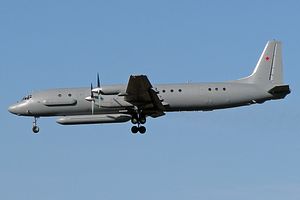Largely described as a power in long-term decline, the Russian military under President Vladimir Putin has embarked on a military modernization program that may be gaining the envy of some in Washington. Putin has invested billions, supported by revenues during the 2004-2014 period when oil prices were high. These efforts have led to impressive improvements within Russia’s conventional forces arsenal, especially its signals intelligence (SIGINT) and electronic warfare (EW) capabilities.
Rushed to battlefields in Syria and Ukraine, these advances have been put on display for the entire world, a testing ground for Putin’s modernization program. In Syria, Russia has deployed Electronic Intelligence (ELINT) and SIGINT aircraft, such as the Il-20, an offshoot of the United States’ P-3 Orion, and the Tu-214R SIGINT targeting and collection aircraft. While in Ukraine, Russia has dominated the information space through a concerted effort of Russian hackers utilizing a form of denial of service attacks (DDoS) and hacking Ukrainian military and counterintelligence units.
The Il-20, commonly referred to as the “Coot,” comes packed with an array of sensors, antennas, IR (Infrared) and Optical sensors, a SLAR (Side-Looking Airborne Radar), and satellite communication equipment for real-time data sharing. The aircraft is commonly used in the Baltic to spy on NATO member states and is currently rumored to be operating in Syria. The aircraft can be utilized to collect on enemy communications and detect signal emissions that can pinpoint large concentrations of enemy fighters.
The newest Russian spy-plane, the Tu-214R, has ELINT and SIGINT platforms on board. It appears to have fairly effective long-range capabilities and circles in the sky in international zones or near borders with unfriendly countries. There are currently two of these in operation, and one was tracked to Syria.
The Tu-214R, which is a variant of the Tupolev Tu-204, a twin-engined medium-range jet aircraft, can intercept signals from cell phones, planes, military vehicles, radios, etc. This helps pinpoint enemy locations as well as providing indications as to what kind of electronic capabilities the enemy is employing, and can provide an indication of the size of an opposing or rebel force.
Lt. Gen. Ben Hodges, commander of U.S. Army units in Europe, described Russian EW capabilities in Ukraine as “eye-watering.” Ronald Pontius, deputy to Army Cyber Command’s chief, Lt. Gen. Edward Cardon, told a conference this month that “you can’t but come to the conclusion that we’re not making progress at the pace the threat demands.”
While it is natural for countries and militaries to keep evolving their technologies, Russia is investing quite a lot of capital to rapidly modernize its military forces, equipping its army to fight in tomorrow’s battlefields. The United States has been criticized for ignoring the rapid development of Russia’s SIGINT and EW capability, which was put on full display at the onset of the Russian invasion into Crimea and east Ukraine, as Ukrainian cell-phones and communications equipment fell silent to Russian jammers.
The U.S. has been too focused on counter-insurgency doctrine, bogged down in conflicts from Iraq to Afghanistan, and the result has been a neglect of America’s own SIGINT and EW capabilities for a conventional war with a power like Russia or China. As evident with Russia’s display of its new capabilities, the United States will have a lot of work on its hands to counter these developments if it wants to keep superiority in this emerging domain.
Caitlin Patterson is a veteran of the U.S. Marine Corps where she served as Cryptologic Linguist and Signals Intelligence Analyst. She is a graduate of the Defense Language institute specializing in Dari and Eurasia.
































